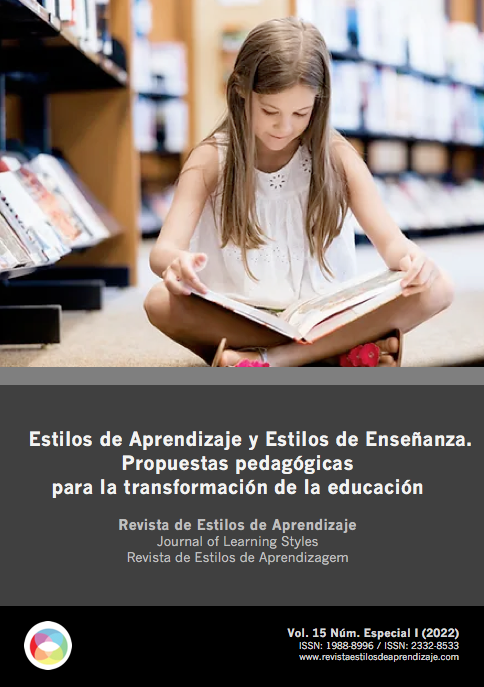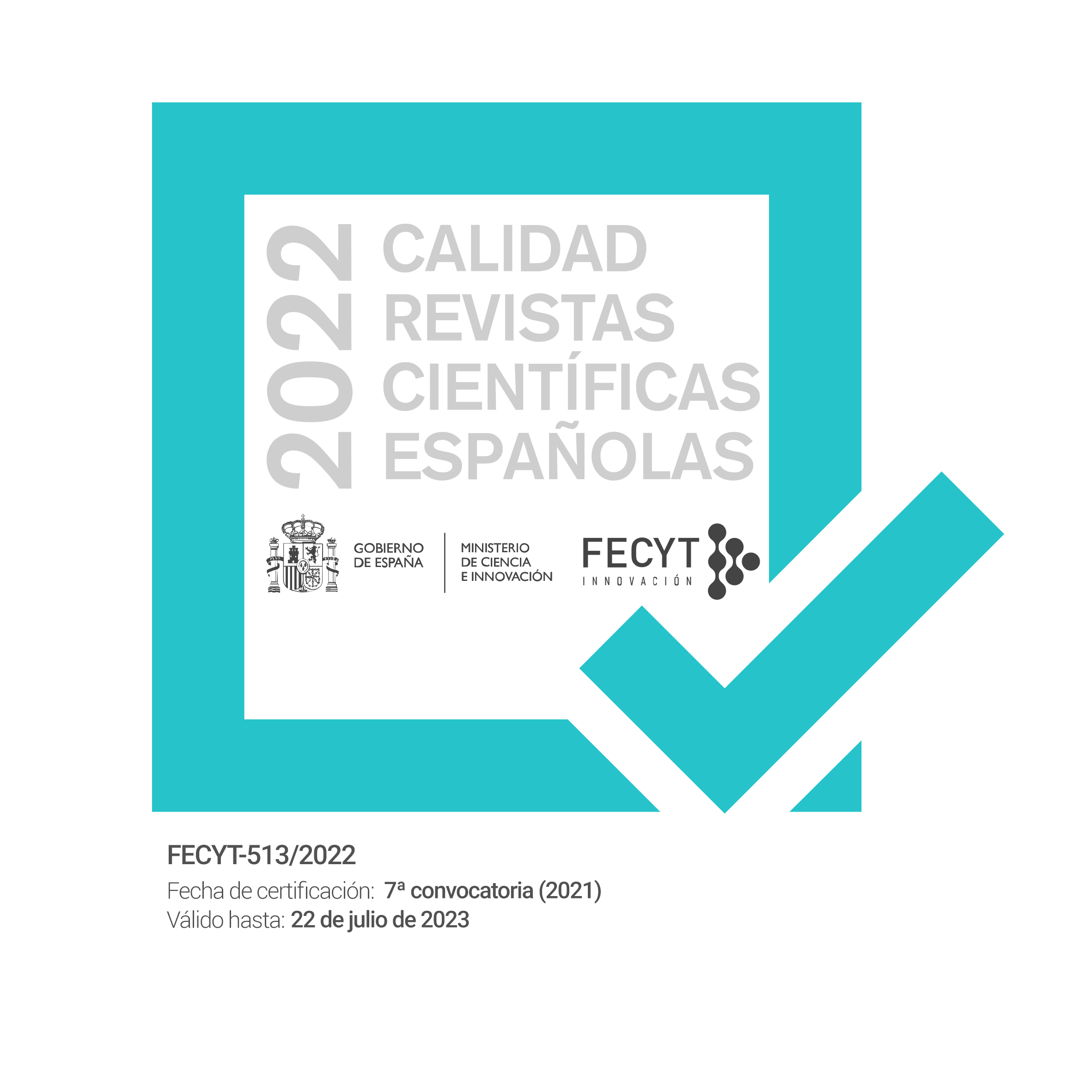Open Learning Object for the teaching of Learning Styles under the Chiron Test proposal
DOI:
https://doi.org/10.55777/rea.v15iEspecial.4593Keywords:
Open Learning Objects, m-learning, learning stylesAbstract
The aim of this paper was to propose an Open Learning Object supported by a hybrid Web-App system as an m-learning resource for the teaching of Learning Styles, under the perspective of the Chiron Test. To carry it out, theories on mobile applications, hybrid Web-App systems, m-learning, Open Learning Objects (OLOs), Mobile Learning Objects (MLOs) and Learning Styles were reviewed. In the methodology, a hybrid system supported by the PADPEEM methodology based on different instructional models was proposed. The results showed the navigation map including the EA-Chiron Test App and the OAM, the architecture and interfaces. It was concluded that the system developed met the characteristics of being an m-learning resource for teaching Learning Styles and that it can also be used in the proposal of didactic strategies in courses or for educational research.
Downloads
References
Abrahamsson P. (2007). Agile Software Development of Mobile Information Systems, en Krogstie J., Opdahl A., Sindre G. (Eds.), Advanced Information Systems Engineering. Lecture Notes in Computer Science, vol 4495. (1-24). Berlin: Springer.
Báez, A., Arellanes, N., y Sosa, N. (2016). Efectividad de la aplicación de metodologías ágiles para el desarrollo de apps móviles. Un caso de estudio. Revista de Sistemas Computacionales y TIC’s. 2 (6), 45–66. https://www.ecorfan.org/spain/researchjournals/Sistemas_Computacionales_y_TICs/vol2num6/Revista_de_Sistemas_Computacionales_y_TIC%60S_V2_N6_7.pdf
Brazuelo, F., y Gallego, D. (2014). Estado del Movile learning en España. Educar em Revista, Curitiba, Brasil, Edição Especial No. 4, 99-128. https;//doi.org/10.1590/0104-4060.38646
DOFM (2021). Diario Oficial de la Federación, México. Acuerdo por el que se determinan los criterios para la administración de los recursos humanos en las dependencias y entidades de la Administración Pública Federal con el objeto de reducir el riesgo de contagio y dispersión del coronavirus SARS-CoV2. https://dof.gob.mx/nota_detalle.php?codigo=5625339&fecha=30/07/2021#gsc.tab=0
García-Cué, J.L., Sánchez Quintanar, C., Jiménez Velázquez, M.A, y Gutiérrez Tapias, M. (2012). Estilos de Aprendizaje y Estrategias de Aprendizaje: Un estudio en discentes de postgrado. Journal of Learning Styles, 10 (5), 65-78. https://doi.org/10.55777/rea.v5i10.961
García-Cué, J. L., Gutiérrez-Tapias, M., Medina-Ramírez, R. C. y Montes-Tierra Blanca, I. (2017). Sistema administrador de Objetos de Aprendizaje que contienen Estilos de Aprendizaje (SIGOAEA). Revista De Estilos De Aprendizaje, 10 (19), 153-190. https://doi.org/10.55777/rea.v10i19.1074
García-Cué, J. L., Márquez-de la Cruz, S. E., Meraz, Escobar, J. M., Medina-Ramírez, R. C., Zepeda-Cortes, C., y Fernández-Pavía, Y. L. (2020). Objeto de Aprendizaje para calcular la Captura de Carbono Aéreo en café, en Los objetos de aprendizaje y sus aplicaciones en la educación (28-37). Puebla, México: Benemérita Universidad Autónoma de Puebla.
García-Cué, J. L., Márquez-de la Cruz, S. E., Meraz, Escobar, J. M., Medina-Ramírez, R. C.; Zepeda-Cortes, C., y Fernández-Pavía, Y. L. (2020). Objeto de Aprendizaje para calcular la Captura de Carbono Aéreo en café, en Los objetos de aprendizaje y sus aplicaciones en la educación (28-37). Puebla, México: Benemérita Universidad Autónoma de Puebla.
García-Grajales, J.; Buenrostro-Silva, A., y López-Vázquez, S. (2021). El internet en tiempos del SARS-Cov-2 (COVID-19) en México. CIENCIA ergo-sum, Revista Científica Multidisciplinaria de Prospectiva, Universidad Autónoma del Estado de México, México, 28 (4), 1-8. https://doi.org/10.30878/ces.v28n4a3
Gibbons, A., Nelson, J., y Richards, R. (2000). The nature and origin of instructional objects, en Wiley, D. (Ed.) The Instructional Use of Learning Objects: Online Version (25-58). https://members.aect.org/publications/InstructionalUseofLearningObjects.pdf
Hodgins, W. (2002). The future of learning objects, en Wiley, D. (Ed.) The Instructional Use of Learning Objects: Online Version (281-298). https://members.aect.org/publications/InstructionalUseofLearningObjects.pdf
IEEE (2009). Institute of Electrical and Electronics Engineers. Recommended practice for software requirements specification. https://standards.ieee.org/ieee/830/1222/
Insuanty, E., Martín, A., y Insuasti, J. (2014). Comparación de tres metodologías de evaluación de objetos de aprendizaje virtuales. Revista de Teoría de la Educación. Educación y cultura en la Sociedad de la Información (TESI), 15 (2), 67-85. https://doi.org/10.14201/eks.11887
Lozano, A., Tijerina, B. A., y García-Cué, J.L. (2016). Implementación del instrumento QuironTest para medir estilos de aprendizaje en estudiantes de pregrado en línea. Revista de Estilos de Aprendizaje, 9 (17), 240-267. https://doi.org/10.55777/rea.v9i17.1053
Márquez, S. E. (2020). Sistema computacional para estimar la captura de carbono en Agroecosistemas de café: Caso Huatusco, Veracruz. (Tesis inédita de Maestría en Ciencias). Colegio de Postgraduados. México. PP 236.
Meraz, J. M., García-Cué, J. L., Fernández, Y. M., Jiménez-Velázquez, M. A., Medina, R. C., y Sangerman, D.M. (2019). Elaboración de objetos de aprendizaje abiertos para ciencias agrícolas bajo la metodología PADDIEM. Revista Mexicana de Ciencias Agrícolas, 10 (5), 1097–1111. https://doi.org/10.29312/remexca.v10i5.1701.
Mérida, Y., y Acuña, L. A. (2020). Covid-19, Pobreza y Educación en Chiapas: Análisis a los Programas Educativos Emergentes. Revista Internacional De Educación Para La Justicia Social, 9(3), 61–82. https://doi.org/10.15366/riejs2020.9.3.004
Ozcamli, F., y Cavus, N. (2011). Basic elements and characteristics of mobile learning. Procedia - Social and Behavioral Sciences, 28 (1), 937–942. https://doi.org/10.1016/j.sbspro.2011.11.173.
PNVM (2021). Plan Nacional de Vacunación, México. https://coronavirus.gob.mx.
Rivera, L. A., López, E., Hernández, Y., Domínguez, S., y Excelente, C.B. (2018). Layered Software Architecture for the Development of Mobile Learning Objects with Augmented Reality. IEEE Access, 6 (1), 57897-57909 https://doi.org/10.1109/ACCESS.2018.2873976.
Sánchez Mendiola, M., Martínez, AM P., Torres, R., Agüero, M., Hernández, A., Benavides, MA, Jaimes, C. y Rendón, V. (2020). Retos educativos durante la pandemia de COVID-19: una encuesta a profesores de la UNAM. Revista Digital Universitaria, 21 (3), 1-23. http://doi.org/10.22201/codeic.16076079e.2020.v21n3.a12
Sanz, I., Sainz, J., y Capilla, A. (2020). Efectos de la crisis del coronavirus en la educación superior. Organización de Estados Iberoamericano para la Educación, la Ciencia y la Cultura. https://oei.org.br/arquivos/informe-covid-19d.pd
Velasco-Tutivén, F.H., Lecaro-Castro, J.E., Correa-Pachay, G.Y.; García-Quinto, F.A., Mota-Villamar, N. del R., Moreno-Pérez, C.A., y Tulcán Muñoz, J. M. (2021). La brecha digital en el proceso de aprendizaje durante tiempos de pandemia. Ciencia Latina Revista Científica Multidisciplinar, 5 (3), 3096-3107. https://doi.org/10.37811/cl_rcm.v5i3.515
Wiley, D. (2008). The Learning Objects Literature, en Jonassen, D., Michael J. Spector, M.J., Driscoll, M., Merrill, M. D., y Merrienboer (Eds.), Handbook of Research on Educational Communications and Technology (345-354), New York: Taylor and Francis Group.

Downloads
Published
How to Cite
Issue
Section
License
By submitting the original, the author(s) declare that they are aware of and accept, in full, the privacy policy as well as the copyright of the Learning Styles Magazine.
The Learning Styles Magazine offers free and open access to its content, completely free of charge, in order to bring scientific research to its readers and society in general. All digital contents are free and open access and are published under a Creative Commons license:

Rights are granted under the Creative Commons Reconocimiento-NoComercial-SinObraDerivada 4.0 Internacional (CC-BY-NC-ND 4.0)
The Learning Styles Magazine is an open access journal. Publication of articles or reviews in the Journal does not entitle you to any remuneration. For authors as well as readers, the journal is free Creative Commons Reconocimiento-NoComercial-SinObraDerivada 4.0 Internacional (CC-BY-NC-ND 4.0).
With this licence, the reproduction and dissemination of the contents of the magazine for educational, social and knowledge transmission purposes is permitted, without any profit motive in mind, provided that the source and authorship are not modified. The licence granted to Learning Styles Magazine allows the copying and distribution of the magazine's contents, as long as the authorship of the work is recognised, correctly specifying the author and the publishing entity. The work may not be used for commercial purposes, nor may it be altered, transformed or generated from this work.
The publication of articles or reviews in the Journal does not give the right to any remuneration.
The Learning Styles Journal invites the author/authors to increase the visibility and scope of their articles published by re-disseminating them in:
- Web spaces and personal networks, as well as in scientific meetings and forums
- Open institutional archives in Universities, educational repositories and Research Centres.
- Academic and scientific networks (Researchgate, Academia.edu, Plubons, etc.)
All these spaces and publications must include all the bibliographic data of the publication.
























